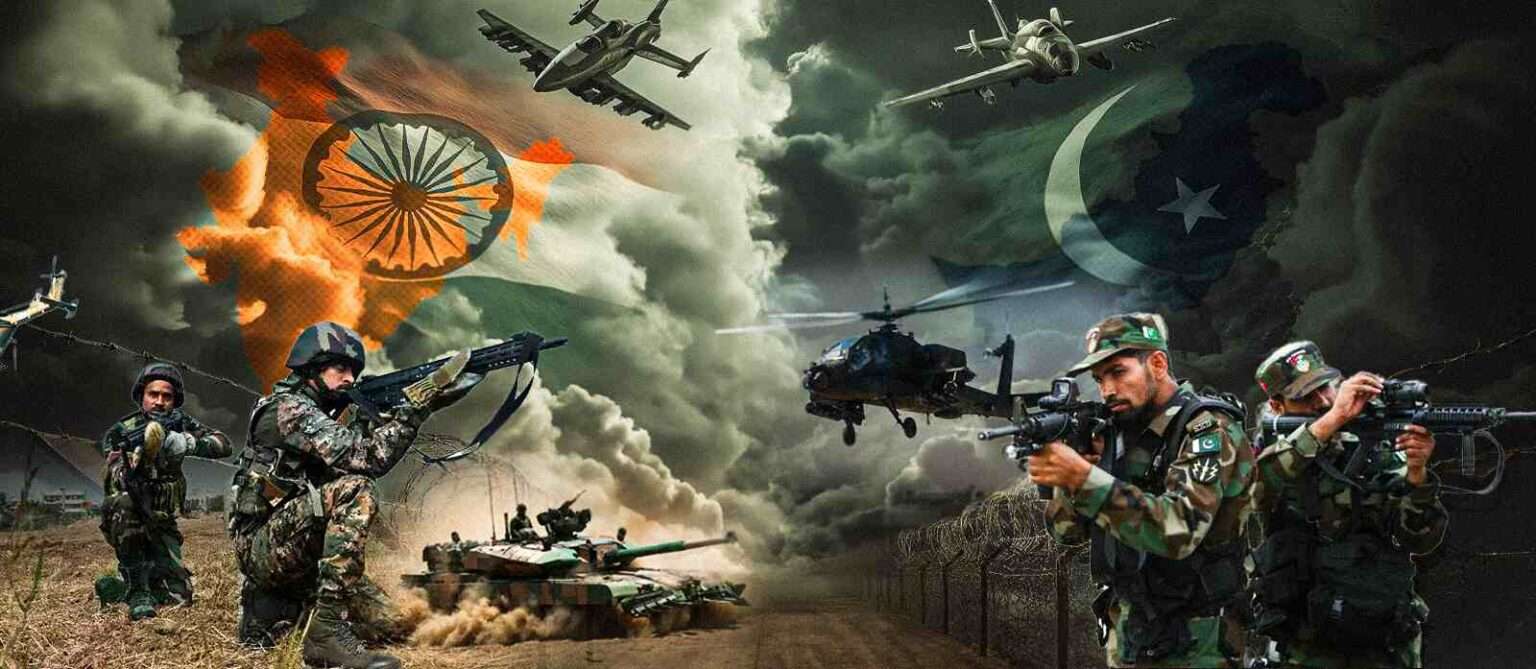The 2025 India-Pakistan conflict, sparked by the devastating Pahalgam terrorist attack on April 22 and escalated by India’s Operation Sindoor on May 7, has plunged South Asia into a precarious standoff. This article provides an in-depth analysis of the crisis, exploring its military, diplomatic, and humanitarian dimensions, alongside India’s evolving geopolitical strategy. It offers a balanced perspective on a conflict teetering on the edge of broader escalation.
On April 22, 2025, a terrorist attack struck Pahalgam, Jammu and Kashmir, killing 26 tourists, including 25 Indian nationals and one Nepali, at Baisaran meadow. India swiftly attributed the massacre to Pakistan-based groups Jaish-e-Mohammed (JeM) and Lashkar-e-Taiba (LeT). Pakistan condemned the attack but denied involvement. The incident ignited public outrage across India, fueling protests and setting the stage for a sharp escalation.
Diplomatic Rupture: Treaties and Borders Collapse
India responded decisively the following day by suspending the Indus Waters Treaty, a critical water-sharing agreement,imposing visa restrictions on Pakistani nationals. Pakistan retaliated by canceling visas for Indian nationals and halting bilateral trade. Both nations expelled diplomats, reduced embassy staff, and sealed the Attari-Wagah border, crippling trade, agriculture, and tourism. These moves paralyzed economic activity and deepened the regional impact of the crisis.
On May 7, 2025, India launched Operation Sindoor, a 25-minute precision airstrike targeting nine terrorist facilities in Pakistan and Pakistan-occupied Jammu and Kashmir. Rafale jets, loitering munitions, and Scalp missiles were used to dismantle infrastructure of JeM, LeT, and Hizbul Mujahideen.
Key Targets Included:
- Bahawalpur: JeM’s operational hub.
- Muridke: LeT headquarters.
- Muzaffarabad: JeM training camp.
- Sialkot: Hizbul Mujahideen control center.
India reported eliminating 70-100 terrorists, while Pakistan claimed civilian casualties, leading to retaliatory shelling on May 8 that killed civilians and an Indian soldier in Poonch, Jammu and Kashmir.
Nuclear Risks and Global Calls for Restraint
With both countries being nuclear-armed, the escalation raised global alarms. World powers called for de-escalation and initiated diplomatic engagement with both sides. India’s National Security Adviser held high-level briefings with major allies to reinforce its anti-terrorism narrative and clarify the objectives of Operation Sindoor.
India’s Geopolitical Alliances: Navigating the Crisis
India’s strategic partnerships played a critical role in managing the international fallout:
- United States: Supported India’s stance against terrorism and strengthened bilateral intelligence cooperation.
- Russia: Maintained diplomatic neutrality while emphasizing regional stability.
- Middle East (UAE, Saudi Arabia): Despite being Islamic nations, both UAE and Saudi Arabia tacitly supported India due to mutual concerns over extremism. This left Pakistan increasingly isolated on the global stage.
- France and UK: Advocated India’s right to self-defense while encouraging dialogue.
- China: Called for restraint without overtly siding with either party.
These alliances reinforced India’s position at the United Nations, where Pakistan had sought international intervention.
Türkiye-Pakistan Naval Engagement
From May 3-7, 2025, a Turkish Navy vessel docked in Karachi as part of a scheduled goodwill visit aimed at enhancing maritime cooperation. Though it occurred amid heightened tensions, there was no confirmed evidence of military alignment, despite speculation.
Root Causes: The Kashmir Conundrum
At the core of the crisis lies the unresolved Kashmir dispute. India accuses Pakistan of supporting cross-border terrorism, while Pakistan maintains that it supports Kashmiri self-determination and raises concerns over human rights. These entrenched positions continue to obstruct peace efforts.
Humanitarian Toll and Regional Risks
The war’s human impact has been severe:
- Displacement and Trauma: Civilians in conflict zones have been displaced, schools have closed, and communities are under psychological strain.
- Economic Collapse: Suspension of trade and closure of borders has devastated agriculture and tourism in Kashmir.
- Regional Instability: With external actors involved and nuclear risks looming, the region remains volatile and vulnerable to broader conflict.
Conclusion: A Call for De-escalation
The 2025 India-Pakistan conflict, triggered by the Pahalgam attack and intensified by Operation Sindoor, stands at a critical juncture. India’s global alliances bolster its position, while Pakistan faces increasing isolation. The suspension of the Indus Waters Treaty, closure of the Attari-Wagah border, and visa restrictions on Pakistani nationals underscore the escalation. Pakistan should pursue a ceasefire to avert further Indian action. Lasting peace in South Asia requires bold leadership, trust, and international cooperation.

